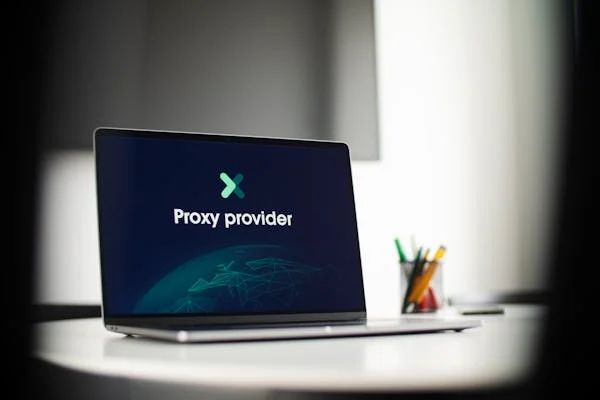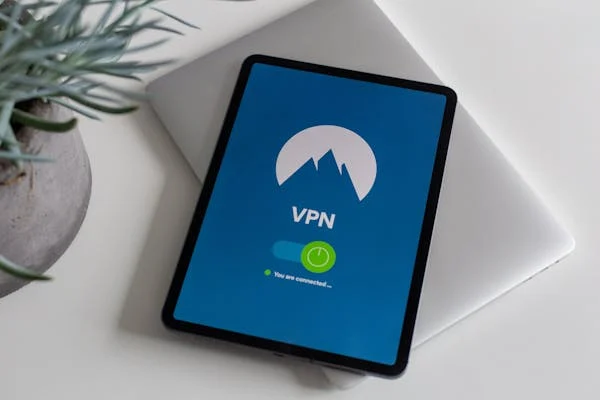In the last few years, cybersecurity mergers and acquisitions (M&A) have shifted from a niche topic to a boardroom priority. Companies are not only defending their digital borders but also racing to buy the best tools, teams, and technologies before their competitors do. But what exactly is happening in the M&A space? Who’s buying what? And more importantly—why?
1. 72% of cybersecurity M&A deals in 2024 were driven by cloud security consolidation
The cloud is not just a trend—it’s the battlefield
As more companies shift to hybrid or fully cloud-native operations, the attack surface for cyber threats has exploded. Naturally, this means cybersecurity firms focused on cloud security have become prime targets.
In 2024, nearly three-quarters of M&A deals were aimed at cloud security consolidation. That’s a loud signal: large firms are trying to stitch together a full-stack cloud security platform by acquiring what they don’t have instead of building it from scratch.
Why consolidation is speeding up
There’s a very practical reason behind this: enterprises want one vendor that can secure everything from identity, to workloads, to data, across AWS, Azure, and Google Cloud. Managing multiple fragmented tools is costly, slow, and error-prone. So the big names—Palo Alto, Microsoft, and CrowdStrike—are buying niche cloud players to plug feature gaps and offer unified solutions.
What this means for startups and sellers
If you’re a cloud security startup, now is the time to sharpen your pitch, product, and partnerships. Make sure your solution solves a narrow, painful cloud security problem really well. Buyers are looking for specialist tech that can be integrated into a broader suite.
Founders should also focus on making integrations seamless. Buyers want tech that plays nicely with existing cloud platforms—APIs, DevOps workflows, and third-party plugins all matter.
For investors, the message is simple: lean into cloud security. Especially areas like Kubernetes security, cloud-native application protection (CNAPP), and data access governance.
2. Private equity firms accounted for 42% of all cybersecurity M&A activity in 2023
PE is no longer sitting on the sidelines
Historically, strategic buyers like Cisco or IBM were the main acquirers in cybersecurity. But in 2023, private equity firms took up a massive 42% of all M&A activity in this space.
Why? Because cybersecurity has become a cash-generating engine with sticky customer bases. Recurring revenue, low churn, and long sales cycles are music to a private equity firm’s ears.
PE strategy: buy, build, scale
PE firms aren’t just buying one company. They’re buying a platform company and then adding smaller firms on top to expand into new verticals or geographies. This “buy and build” model is now a common playbook in cybersecurity.
For example, Thoma Bravo and Vista Equity Partners have repeatedly used this model to grow cybersecurity giants from a portfolio of small to mid-sized firms.
Advice for founders looking at PE exits
If you’re approached by a private equity buyer, understand the deal structure. You may be asked to roll over equity and stay on post-acquisition to lead integration or growth. Know your numbers, especially retention rates, customer lifetime value, and gross margin.
Also, PE firms love clean operations. Fix your messy cap table. Clean up accounting. Cut unnecessary burn. A well-run business attracts better offers.
And if you’re a founder building for a PE exit, make yourself look like a platform: modular tech, strong recurring revenue, and an experienced leadership team are all magnets.
3. Strategic acquirers represented 58% of cybersecurity deal volume in 2023
It’s still a strategic buyer’s game
While PE is gaining ground, strategic buyers still closed the majority of cybersecurity M&A deals in 2023. And there’s a good reason: they’re not buying for financial engineering—they’re buying to win markets.
Strategic acquirers like Google, Cisco, and Microsoft want to offer end-to-end solutions to enterprise customers. When they see a startup with strong tech and solid product-market fit, they move fast.
What strategic buyers are really looking for
It’s not just about tech. Strategic buyers look at how your product fits into their existing portfolio. Can it open new doors for their sales team? Will it help them retain current clients? Can it beat competitors to market?
Your go-to-market motion matters just as much as your tech. If your startup sells to the same enterprise accounts they want to win, your value goes up.
How to position for strategic M&A
Think like your buyer. Study their roadmap. Know what areas they’re weak in. Look at who they’ve acquired in the past 3 years. Use that insight to tailor your story.
Also, don’t wait for inbound interest. Build relationships with corp dev teams early. Get on their radar before you need to. That way, when they’re ready to buy, you’re already in the running.
4. The average deal size in cybersecurity M&A rose to $410 million in 2023
Big checks are getting written
Cybersecurity has gone from being an IT cost center to a business enabler. And that shift is reflected in deal sizes. In 2023, the average deal size rose to $410 million, signaling just how serious buyers are about locking in their competitive edge.
This isn’t just happening at the top end. Even mid-market deals are getting bigger as buyers pay a premium for solid tech and strong teams.
Why valuations are surging
There’s fierce competition for best-in-class assets. Buyers know there are only so many strong startups in each niche—whether that’s identity management, endpoint protection, or application security. When one goes up for sale, bidding wars follow.
And with private equity flooding the space with dry powder, strategic buyers are being forced to bid higher or risk losing out.
What founders need to watch
Larger deal sizes come with more scrutiny. Buyers will expect polished financials, a defensible moat, and detailed customer data. If you want to command a high price, you must show predictable growth, low churn, and a clear path to profitability.
Founders should also prepare for longer due diligence periods. As check sizes increase, acquirers will dig deeper—on legal, financial, and technical fronts. Having clean docs and proper governance pays off.
5. Over 60% of acquired cybersecurity firms in 2023 specialized in identity and access management
Identity is now the new security perimeter
With remote work, SaaS apps, and third-party integrations, the traditional network perimeter is gone. Now, identity is the frontline. That’s why more than 60% of acquired firms in 2023 specialized in identity and access management (IAM).
From multi-factor authentication to privileged access control, buyers are looking for solutions that make it harder for attackers to impersonate users or escalate privileges.
Where the action is in IAM
M&A activity in IAM isn’t limited to just authentication tools. It includes identity governance, role-based access control, and directory integration tools.
Cloud-native identity providers, passwordless authentication startups, and decentralized identity frameworks are especially hot. Buyers want plug-and-play solutions that integrate well across diverse infrastructure.
Positioning yourself as a target in IAM
If you’re in this space, focus on compliance-driven verticals like healthcare, banking, or government. Buyers love startups that have passed tough audits and operate in regulated environments.
Also, make your tech easy to integrate. Buyers want IAM tools that sync smoothly with Microsoft Azure AD, Okta, and legacy LDAP systems. If you have pre-built connectors and APIs, highlight them.
6. 35% of cybersecurity acquisitions in 2024 focused on threat intelligence and analytics
The fight is about knowing before the attack happens
Threat intelligence isn’t just a buzzword anymore—it’s a necessity. Companies are no longer satisfied with reacting to breaches. They want to predict and prevent them. That explains why 35% of all cybersecurity M&A in 2024 centered on threat intelligence and analytics.
This area includes tools that collect, analyze, and act on data from various attack vectors. From dark web monitoring to AI-based anomaly detection, buyers want real-time awareness.
What’s driving demand for threat intel
There’s a data overload in security operations centers (SOCs). Analysts are overwhelmed. That’s why acquirers want smart tools that reduce noise and highlight real threats. If your startup can deliver actionable insights—not just dashboards—you’re valuable.
Another reason is geopolitical tension. Governments and critical infrastructure providers want to stay ahead of nation-state actors. Threat intel gives them that edge.
Selling threat intel? Here’s how to stand out
Focus on accuracy. Buyers don’t want flashy features—they want insights that are timely, relevant, and verified.
Also, tailor your data to verticals. Retail wants different threat profiles than defense or fintech. Show you understand those nuances.
If you’re using machine learning, explain how it works. Buyers want transparency. They’re more likely to trust what they can understand and explain to stakeholders.
7. 28% of 2023 M&A deals targeted endpoint protection platforms
Every device is a potential weak point
As remote work and BYOD (bring your own device) policies spread, endpoints have become a hacker’s playground. That’s why 28% of all cybersecurity M&A in 2023 went toward endpoint protection platforms.
These tools defend laptops, desktops, mobile devices, and even IoT gadgets from malware, ransomware, and zero-day exploits. They’re essential, and acquirers know it.
Why the endpoint war is heating up
Today’s attacks don’t always go through the front door. Often, they start with a vulnerable laptop or mobile device. Endpoint protection is the last line of defense when other controls fail.
And it’s not just about antivirus anymore. Modern endpoint security includes behavior analytics, rollback features, and integration with broader XDR (extended detection and response) systems.
What endpoint startups should focus on
If you’re building in this space, think about speed and simplicity. Security teams are tired of clunky agents and bloated software. Offer lightweight solutions that install fast and don’t drain CPU.
Also, make your detection engine explainable. Buyers want tools that not only block threats but help them understand why something was flagged.
Finally, integrate easily with SIEM and EDR platforms. Buyers prefer tools that talk to the rest of their stack without complex engineering.
8. Palo Alto Networks completed 7 cybersecurity acquisitions between 2022 and 2024
One company is setting the pace
Palo Alto Networks has been on an acquisition spree, grabbing seven cybersecurity firms in just two years. Why? Because it wants to be the default one-stop shop for enterprise security.
Instead of building slowly, Palo Alto is buying best-in-class tools and integrating them into its Prisma and Cortex platforms. This approach is about speed, synergy, and sealing gaps before competitors can.
The Palo Alto playbook
They’re not just buying tech—they’re buying time. By acquiring fast, they reduce R&D costs and gain immediate market traction. They also tend to retain founding teams, giving continuity and domain expertise to the integration process.
Palo Alto looks for startups with proven market fit, strong engineering, and enterprise-grade support. If you’re aiming for them as an acquirer, those are your checkboxes.
How to attract interest from serial acquirers
Stay visible. Attend security conferences, publish thought leadership, and speak on panels. These buyers scout early and track startups over time.
Also, make your architecture compatible. If you align with Palo Alto’s cloud-first approach, you’re more likely to be considered.
And finally, maintain strong ARR (annual recurring revenue) growth. These buyers move fast, but only when they see evidence of traction.
9. Thoma Bravo spent over $20 billion in cybersecurity acquisitions from 2021 to 2024
The biggest checkbooks belong to private equity
Thoma Bravo isn’t dabbling in cybersecurity—they’re dominating it. With over $20 billion spent in three years, they’ve acquired giants like Proofpoint and Sophos, and smaller niche players too.
Their goal is clear: build category leaders by buying fragmented assets and merging them into scalable platforms.
The Thoma Bravo strategy decoded
They buy undervalued or under-optimized companies, improve operations, cut excess costs, and grow profitably. Then they either sell or IPO the platform.
They’re methodical. They target firms with sticky customer bases, B2B models, and strong gross margins. Technical innovation is great—but business fundamentals are what really drive deals.
Want to get on their radar?
Build a real business. That means high retention, clean books, scalable revenue, and a mature sales process. PE buyers aren’t buying dreams—they’re buying results.
Make sure your back office is solid. Have audited financials, a clear org chart, and secure contracts. Every weak point is a potential discount in valuation.
Also, build a trusted CFO function early. PE deals are financial beasts. A great product with weak financial controls will get passed over.
10. Cloudflare and Zscaler emerged as active buyers in the SASE space in 2023
The future of networking and security is converging
Secure Access Service Edge (SASE) is where networking and cybersecurity merge. It’s about delivering security policies through the cloud—no matter where users are or what device they use.
Cloudflare and Zscaler have jumped in aggressively. In 2023, they acquired several startups focused on SD-WAN, zero trust, and traffic routing to strengthen their SASE offerings.
Why SASE is strategic gold
Traditional VPNs and on-prem firewalls are no longer enough. Enterprises want cloud-delivered security that travels with the user, not locked in a data center.
This shift has created a mad dash to own the SASE narrative. Vendors like Cloudflare and Zscaler are using acquisitions to expand quickly and meet rising demand.

Building in the SASE world? Here’s what to do
Focus on performance. SASE isn’t just about security—it’s about speed and reliability too. Your tech must deliver low-latency access with airtight protection.
Also, embrace multi-cloud. Buyers want SASE tools that work across AWS, Azure, and GCP without friction.
Don’t forget policy management. Your admin console needs to be intuitive and powerful. CISOs want to manage users, apps, and data access without needing ten dashboards.
11. 47% of all 2023 cybersecurity deals involved companies under $100 million in valuation
Smaller fish are being snapped up fast
Almost half of the cybersecurity M&A deals in 2023 involved companies valued below $100 million. That may sound small in an industry full of billion-dollar headlines, but it signals something important: buyers are increasingly interested in nimble, specialized startups that solve specific problems.
These smaller deals close faster, come with less risk, and often offer better integration outcomes. They also give buyers an edge in emerging tech before valuations spike.
Why acquirers love sub-$100M targets
These targets are usually more flexible, easier to negotiate with, and come with fewer layers of legacy systems or bureaucracy. Larger companies use them to get ahead of trends and test new markets without massive capital outlay.
Also, smaller firms often have cutting-edge innovation but lack scale. Buyers see this as an opportunity to inject capital and bring the product to a wider customer base quickly.
How to get acquired under $100M
If you’re running a cybersecurity startup in this valuation range, focus on defensibility. That could mean a patented technology, unique threat database, or vertical-specific solution.
Make sure your metrics are solid. Buyers still want to see good retention rates, clear product-market fit, and low customer acquisition costs—even in smaller deals.
Also, be aware of who’s active in your niche. Map out the top 10 acquirers in your category. Start building relationships before you hit the market.
12. Over 80% of acquired cybersecurity startups had fewer than 150 employees
Lean teams are winning the exit game
The idea that you need a huge team to get acquired is outdated. In fact, more than 80% of cybersecurity startups that got acquired in 2023 had teams of fewer than 150 people. Many had under 50.
Why does this matter? Because buyers today are looking for lean, high-output teams that innovate quickly. They prefer agility over size, especially in earlier-stage acquisitions.
The magic of a small, focused team
Smaller teams tend to be tightly aligned, iterate faster, and carry less organizational baggage. They’re easier to integrate post-acquisition and less likely to resist cultural shifts.
Acquirers often believe they can bring distribution, sales, and marketing muscle—what they want from a startup is a product they can scale.
How to build a small team that attracts big buyers
Start by hiring with clarity. Avoid bloated org charts or redundant roles. Focus on engineering, customer success, and DevSecOps. Every hire should directly contribute to product value or client retention.
Also, document everything. Buyers love startups that have clear processes, defined responsibilities, and organized product roadmaps. It shows maturity—even in a small package.
Don’t chase vanity metrics like headcount. Instead, measure value delivered per employee. That’s what makes buyers pay attention.
13. Microsoft increased its cybersecurity M&A budget by 25% from 2022 to 2024
One of the world’s biggest buyers is going all in
Microsoft is putting its money where the threats are. Over the past two years, it increased its M&A budget for cybersecurity by 25%. That’s a massive vote of confidence in the sector—and a clear signal to founders, investors, and competitors alike.
From identity protection to XDR, Microsoft is hunting for gaps it can fill through acquisition rather than internal development.
Why Microsoft is doubling down
Their enterprise customers are demanding unified security across cloud, desktop, and mobile environments. Microsoft sees an opportunity to become the default security layer for the hybrid workplace.
To stay competitive against Google and Amazon, they’re buying teams and technologies that can extend their Azure security portfolio and Microsoft Defender suite.
How to appeal to a Microsoft-type acquirer
Make sure your solution integrates smoothly with Microsoft environments. If your product supports Azure AD, Microsoft 365, or Windows endpoints out of the box, highlight that aggressively.
Invest in compliance. Microsoft operates globally and wants acquisition targets that are already aligned with GDPR, SOC 2, and ISO standards.
Also, keep your codebase clean. Microsoft does extensive technical due diligence. A messy architecture can kill a deal even if your product works great.
14. Nearly 40% of buyers cited “zero trust architecture” as a primary acquisition driver in 2023
Trust no one, buy those who help you prove it
Zero trust has gone from a security philosophy to a business mandate. In 2023, nearly 40% of buyers specifically cited zero trust architecture (ZTA) as a reason behind their acquisitions.
This isn’t a buzzword—it’s a strategy. And buyers are snapping up startups that make it easier to implement.
What buyers want in zero trust tools
They want micro-segmentation, continuous verification, identity-based access, and strong authentication. But more than that, they want solutions that are easy to deploy in multi-cloud and hybrid environments.
The days of castle-and-moat are over. Buyers need dynamic access controls that adjust based on user, device, location, and behavior—all in real time.
Building or selling ZTA solutions? Do this
Focus on integration. Your tool should work across environments—cloud, on-prem, mobile—and be API-friendly.
Show measurable outcomes. Can your solution reduce attack surface? Can it lower dwell time? Buyers want evidence.
If possible, wrap your product in a user-friendly policy engine. Admins love tools that let them write access rules in plain English, not obscure code.
Also, avoid complexity. Zero trust can be daunting. If your UI is simple, you’ll have a big advantage during buyer demos.
15. 2023 saw a 19% YoY increase in cybersecurity M&A deal count globally
The M&A wave is not slowing down
Across the globe, cybersecurity M&A activity rose by 19% year-over-year in 2023. That’s not just a rebound—it’s a surge. This trend shows no signs of tapering off.
From North America to Asia-Pacific, dealmakers are actively scouting for innovative startups to bolster their portfolios. This growth proves that cybersecurity is now a global investment priority.
What’s fueling the surge?
For one, the threat landscape is evolving daily. Companies can’t afford to wait for internal innovation. M&A gives them instant access to mature products.
Second, regulatory pressure is increasing. From the SEC to the EU, businesses are being held more accountable for breaches. This is driving demand for better, faster, and broader protection.

And third, digital transformation has sped up post-pandemic. Every new SaaS app, device, or user becomes a new risk—and a new reason to buy cybersecurity tech.
How to position in a crowded market
Don’t try to be everything. The most successful exits in a rising M&A market are hyper-focused. Solve one painful problem, do it extremely well, and let buyers come to you.
Also, track global players. If you’re in Europe or Asia, remember that US buyers are hunting cross-border deals. Make your materials investor-ready and easy to translate culturally and legally.
Invest in visibility. Thought leadership, analyst relations, and strong documentation can help you stand out in a rapidly growing M&A field.
16. 55% of cybersecurity M&A transactions in 2023 were cross-border
Security doesn’t stop at national borders—and neither does M&A
In 2023, more than half of all cybersecurity M&A deals were cross-border. This shows just how global the industry has become. Buyers aren’t just looking in their own backyard anymore. They’re looking for innovation wherever it’s happening—whether that’s Tel Aviv, London, Singapore, or Austin.
This cross-border trend also reflects how security threats themselves are global. Malware built in one country can affect systems halfway across the world in seconds. So acquirers are expanding their footprint accordingly.
Why cross-border deals are rising
There are two main reasons. First, global buyers want local presence. They acquire to get boots on the ground in new regions where cybersecurity regulations or customer needs vary.
Second, it’s about talent. Some of the best cybersecurity minds are outside Silicon Valley. Acquiring firms in other countries gives buyers instant access to skilled engineers and researchers.
Plus, exchange rate differences and local valuations can make acquisitions more affordable in emerging markets.
What cross-border buyers want to see
You need clean, globally acceptable accounting standards—preferably GAAP or IFRS.
Legal structures matter too. Buyers want to see that your intellectual property is properly registered and transferable. Data localization laws in your country could impact how easy it is for a buyer to operate post-acquisition.
If you’re in a hot region like Israel, India, or Eastern Europe, make your value clear. Local traction, defensible tech, and strong leadership teams are huge selling points for foreign buyers.
17. Israeli cybersecurity companies accounted for 18% of global M&A targets in 2023
Israel: the Silicon Valley of cybersecurity
Israel is punching far above its weight in the cybersecurity world. Despite being a small country, it made up 18% of global M&A targets in 2023. That’s not a fluke—it’s a pattern built over decades of technical expertise, military training, and startup culture.
The Israeli Defense Forces (IDF) produce a steady pipeline of cyber talent, especially from elite units like 8200. These veterans go on to build companies with cutting-edge capabilities in threat detection, encryption, forensics, and beyond.
What makes Israeli startups so attractive?
They move fast. They build lean. And they focus on deep tech.
Most Israeli founders are engineers first, businesspeople second. That might sound like a weakness, but it’s actually a strength in cybersecurity, where technical depth matters more than brand polish—at least in early stages.
Also, the Israeli startup ecosystem is extremely well connected. Venture capital flows freely, mentorship is abundant, and companies often hit revenue milestones faster than their peers elsewhere.
Want to be acquired like the Israelis?
Even if you’re not based in Israel, you can learn from their model.
Invest early in technical excellence. Focus on solving one big problem really well. Keep your team tight, your runway long, and your product roadmap aggressive.
And don’t wait for your Series B to think about M&A. Israeli startups often start talking to corporate development teams early. They build relationships long before they’re “ready” to sell. That head start makes all the difference.
18. North America hosted 63% of cybersecurity M&A deals in 2023
The market may be global—but the heart still beats in North America
While cybersecurity M&A is spreading across the globe, North America remains the epicenter. In 2023, 63% of all cybersecurity deals happened in the region, driven largely by U.S. acquirers and targets.
The reasons are simple: the market is mature, the budgets are bigger, and the stakes are higher. U.S.-based enterprises face the most cyberattacks globally—and spend the most on defense.
Why North America dominates
Regulatory pressure plays a big role. From the SEC to state-level privacy laws like CCPA, compliance demands push companies to upgrade their cybersecurity postures. M&A is often the fastest way to meet those demands.

Also, U.S. buyers—both strategic and private equity—have the biggest war chests. They move fast and make bold plays to outpace their rivals.
Finally, North America has the world’s highest concentration of CISOs, cyber analysts, and enterprise buyers. That makes it a natural launchpad for cybersecurity tools.
What this means if you’re in North America—or not
If you’re based in the U.S. or Canada, leverage that. Build in public. Network at local industry events. Engage with VC firms that have connections to M&A buyers.
If you’re outside North America, build your bridge. Make it easy for U.S. buyers to understand your product, your metrics, and your market. Translate materials. Offer demos in U.S. time zones. Be acquisition-ready for a North American buyer, even if you’re not local.
19. Asia-Pacific cybersecurity M&A activity grew by 14% YoY in 2023
APAC is on the rise—and buyers are watching
Asia-Pacific is no longer lagging in cybersecurity innovation. In 2023, M&A activity in the region grew 14% year over year, with particular hotspots in Singapore, India, South Korea, and Australia.
This growth reflects both rising local demand and increasing international interest in APAC startups. Buyers see a region that’s scaling fast, digitizing quickly, and facing a growing threat landscape.
What’s driving the surge?
Two key forces are at work. First, governments across Asia are tightening cyber regulations and encouraging local solutions. This creates fertile ground for homegrown startups.
Second, multinational corporations expanding in the region want localized tools that understand cultural, linguistic, and legal nuances. Acquiring local cybersecurity firms helps them gain a trusted foothold.
There’s also a growing number of deep-tech accelerators in Asia, which help produce security startups that are acquisition-ready from day one.
Selling in APAC? How to stand out
Show your edge. Do you have government certifications? Are you compliant with data sovereignty laws in your region? Buyers care about this more than you think.
Focus on mobile-first and cloud-first deployments. APAC markets often leapfrog traditional IT and go straight to mobile-based workflows and distributed apps. Your tech needs to match that rhythm.
Lastly, be patient. APAC deals often involve more due diligence and relationship-building. But if you can deliver strong customer growth and local expertise, you’re a prime target.
20. 68% of cybersecurity acquisitions in 2024 included AI or machine learning capabilities
AI is not a feature—it’s a requirement
In 2024, more than two-thirds of cybersecurity M&A deals involved companies with AI or machine learning baked into their product. That’s not surprising—modern threats move too fast for human analysts to keep up. AI helps teams detect patterns, automate responses, and reduce noise.
What’s changing is that buyers no longer treat AI as a shiny add-on. They expect it as part of the core engine.
Why AI is at the center of M&A strategy
Buyers want faster detection, better prioritization, and automatic response workflows. AI makes that possible.
From anomaly detection to behavior analysis, AI is helping reduce false positives and increase the speed of remediation. That means less manual work and better protection for enterprises.
Also, with security teams understaffed globally, AI fills the gap. Tools that automate Tier 1 and Tier 2 SOC activities are especially attractive.
Building with AI? Make it acquisition-ready
First, prove it works. Buyers want training data, performance benchmarks, and real-world use cases—not just marketing claims.
Second, make your AI explainable. Black-box models raise red flags. Buyers prefer models that offer clarity on why alerts were triggered or decisions made.
And third, tie your AI to outcomes. Can you reduce time to detect? Speed up patching? Lower breach rates? Show the ROI.
If you can combine AI with a clear product-market fit, you’ll be in high demand.
21. Google Cloud acquired 3 cybersecurity companies between 2022–2024 focused on data protection
Google isn’t playing catch-up—they’re buying their way in
Between 2022 and 2024, Google Cloud quietly acquired three cybersecurity companies focused on data protection. These weren’t headline-grabbing billion-dollar deals—but they were strategic, and they reveal Google’s focus.
As enterprise clients move sensitive data into Google Cloud, Google wants to ensure it can offer airtight protection. Instead of building new tools from scratch, they’re acquiring small teams with strong IP and folding them into their platform.
Why data protection is Google’s top priority
For Google Cloud to compete with AWS and Azure, it needs to assure clients their data is not only stored but protected—at rest, in motion, and in use. That means encryption, tokenization, and secure data lakes.
Google also wants to build trust with industries like healthcare and finance, where privacy and compliance are non-negotiable.
The acquired firms helped expand Google’s capabilities in secure data discovery, classification, and fine-grained access controls—all crucial for compliance-heavy sectors.
Want to attract a cloud giant like Google?
If your startup focuses on data security, lean into cloud-native design. Your tool should be containerized, API-driven, and integrate seamlessly with GCP.
Compliance will be key—especially if your product helps enterprises meet HIPAA, GDPR, or PCI-DSS requirements. The more certified and audit-friendly your platform, the better.
Also, emphasize user-centric design. Google’s culture values simplicity and scale. If your product is lightweight, intuitive, and developer-friendly, it’s far more appealing as an acquisition target.
22. 75% of cybersecurity buyers preferred companies with subscription-based revenue models
Predictability is priceless
Three out of every four buyers in the cybersecurity space now prefer companies with subscription-based revenue models. That includes SaaS offerings, usage-based billing, and tiered annual licenses.
Why? Because recurring revenue offers predictability. It smooths out cash flow, improves forecasting, and reduces risk. Buyers know what they’re getting—and when they’re getting paid.
Why this model attracts higher valuations
Subscription models drive higher customer lifetime value (CLTV) and lower acquisition costs over time. They also build customer loyalty, reduce churn, and allow for better upselling and cross-selling.
From an M&A perspective, recurring revenue models also give buyers a clearer view of growth potential. That helps justify premium valuations.
If you’re not subscription-based, here’s how to pivot
Start by packaging your product into usage tiers. Offer monthly or annual pricing based on seats, endpoints, or volume of data analyzed.
Track and publish metrics like ARR, MRR, churn rate, and retention. Buyers want to see how sticky your business is.
Even if you’re not 100% SaaS, move your support, analytics, or compliance services into recurring packages. The goal is to build long-term, compounding revenue—not just one-time sales.
23. The median revenue multiple for cybersecurity deals in 2023 was 8.7x
Security gets premium pricing—when the fundamentals are right
In 2023, the median revenue multiple for cybersecurity deals hit 8.7x. That’s a strong signal that buyers are willing to pay a premium for the right company. But it’s also a reminder: this isn’t guaranteed. Your fundamentals must back up that number.
Cybersecurity firms command higher multiples than many other sectors due to mission-critical value, customer stickiness, and often, strong gross margins.
What drives a high revenue multiple?
There are a few key factors:
- Strong growth (30–50%+ YoY is a sweet spot)
- High gross margins (ideally 70%+ for SaaS-based cybersecurity)
- Low churn and high net retention
- Scalable infrastructure and low customer concentration
Buyers don’t just want growth—they want sustainable, efficient growth. The better your unit economics, the higher your multiple.

How to push your valuation toward the top of the range
Focus on retention first. Happy, long-term customers are more valuable than rapid top-line expansion that churns.
Second, simplify your pricing. Buyers love models that scale easily. A confusing rate card or a bespoke setup for every client will lower your valuation.
Third, improve your reporting. If you can show a clean P&L, clear cohort retention, and realistic projections, you’ll get closer to that 8.7x—and possibly more.
24. 22% of all cybersecurity M&A activity in 2023 was in the DevSecOps space
Security is shifting left—and buyers are moving with it
Nearly a quarter of all cybersecurity M&A in 2023 targeted DevSecOps companies. That’s a huge jump, and it reflects a larger shift: security is no longer something you add after code is deployed. It’s baked into the development pipeline from day one.
Buyers want tools that help developers catch vulnerabilities earlier, automate code scanning, and secure CI/CD workflows.
What’s hot in DevSecOps?
Static and dynamic application security testing (SAST/DAST), secret management, infrastructure-as-code scanning, and pipeline compliance monitoring are all attracting serious attention.
Startups that integrate security directly into Git workflows or CI/CD tools like Jenkins, CircleCI, or GitHub Actions are in high demand.
Building for this market? Here’s what to keep in mind
Focus on developer experience. If your tool slows down engineering or requires tons of configuration, it won’t get adopted—by users or acquirers.
Second, offer integrations across the DevOps toolchain. Buyers prefer platforms that fit into existing engineering workflows without friction.
And lastly, show security ROI. Can you reduce critical vulnerabilities by 40%? Speed up compliance audits? Make those metrics obvious in your sales and investor decks.
25. The number of cyber M&A deals involving managed detection and response (MDR) grew by 31% YoY in 2023
Outsourcing detection is now a core enterprise strategy
Managed Detection and Response (MDR) is on a growth tear. In 2023 alone, M&A deals involving MDR providers jumped by 31% year-over-year. That’s because enterprises are overwhelmed by alerts, under-staffed in their SOCs, and in need of continuous protection.
MDR providers offer 24/7 threat monitoring, triage, and response—without requiring massive in-house teams. For many companies, especially mid-market, it’s the most cost-effective way to stay protected.
Why MDR is attractive to acquirers
It’s a high-margin, service-based model that delivers real outcomes. Plus, MDR customers are sticky. Once you’re integrated into a client’s SOC workflows, it’s hard for them to switch.
MDR providers also collect valuable telemetry and behavioral data—something buyers can leverage across other product lines.
Selling MDR? How to stand out in a crowded space
Start by showing your operational maturity. Buyers want to see how you staff, train, and retain analysts. Highlight your SLAs, response times, and use of automation.
Invest in a proprietary platform. If your MDR service is powered by your own detection engine, analytics dashboard, or triage automation, you become more than just a services firm—you become a tech company with IP.
Also, focus on vertical use cases. MDR for healthcare, finance, or manufacturing brings added value. Compliance-heavy industries are often the first to outsource security because the stakes are so high.
26. 30% of acquisitions in 2023 were motivated by talent acquisition in the cybersecurity space
The tech is great—but the people are the real prize
A full 30% of cybersecurity acquisitions in 2023 were primarily talent-driven. That means acquirers weren’t just buying the product—they were buying the team. In a space as technical and fast-moving as cybersecurity, experienced engineers, researchers, and product leaders are gold.
Buyers know that rebuilding great security talent from scratch is nearly impossible. That’s why they’re using M&A to acquire proven teams who can execute fast.
What types of talent attract acquirers?
Buyers are especially interested in teams with deep expertise in:
- Threat hunting and incident response
- Cryptography and secure systems architecture
- Cloud-native security (especially in Kubernetes environments)
- AI-based threat detection
- Privacy engineering and compliance automation
But it’s not just about technical chops. Teams that have successfully gone from 0 to 1—built, launched, and scaled product—are even more valuable.
How to position your team as an acquisition asset
Make your culture visible. Showcase your team’s background, thought leadership, and technical achievements. If you’ve contributed to open-source projects or published research, highlight it.
Keep key employees incentivized and motivated. Buyers want to see a team that will stick around after the acquisition. If your core team has clear equity or earnout packages, it strengthens your exit story.

And finally, invest in leadership. A strong CTO or CISO who can speak fluently to product, engineering, and business needs can often tip a deal in your favor.
27. Financial acquirers averaged 2.3 cybersecurity deals per year from 2021–2024
PE and VC aren’t just funding—they’re buying too
Financial buyers—private equity firms, growth funds, and late-stage VCs—have become serious acquirers. Between 2021 and 2024, they averaged 2.3 cybersecurity deals per year, showing they’re not just investing—they’re buying outright.
These firms are building platforms, bundling capabilities, and turning cybersecurity into high-yield, scalable businesses.
What makes a company attractive to financial buyers?
The key is efficiency. Financial acquirers look for:
- High ARR with consistent growth
- Profitable or near-profitable operations
- Low churn and high upsell potential
- Strong management team that’s willing to stay post-deal
They often buy companies that are just shy of an IPO or that have untapped operational leverage. With the right cost-cutting or expansion strategy, they can improve margins and flip the business within 3–5 years.
Want to sell to financial buyers? Prepare like this
Know your numbers cold—especially your unit economics. Have an airtight data room with clean financials, growth projections, CAC, LTV, and retention by cohort.
Show scale potential. Can you enter new verticals, expand internationally, or upsell existing customers? Build a clear value creation roadmap that a PE partner can get behind.
And remember: the deal doesn’t end at closing. Most financial acquirers want you to stay on and help scale the business post-acquisition. Build a leadership team that’s ready to lead through that next phase.
28. The top 5 cybersecurity acquirers accounted for over 25% of deal volume in 2023
The giants are shaping the market
Five companies—Palo Alto Networks, Cisco, Microsoft, Thoma Bravo, and Fortinet—were responsible for more than a quarter of all cybersecurity M&A in 2023. These power players are buying fast, buying often, and buying strategically.
This consolidation trend means that the biggest players are building broad, integrated platforms that touch every part of the cybersecurity stack—from firewalls to identity to DevSecOps.
Why this matters for the rest of the market
If you’re a founder, this means your likely acquirer is already on your radar. Study what they’re buying. Understand their gaps. Tailor your product and positioning to match their roadmap.
If you’re an investor, it means there are strong, repeat acquirers to plan around. You can model exits based on what these buyers are doing—and align your portfolio strategy accordingly.
And if you’re a buyer, it’s time to move fast. Waiting too long can mean your target gets acquired by a bigger player—or prices get pushed out of reach by competitive bidding.
How to become irresistible to top acquirers
Build something they can’t live without. That could be unique IP, strong developer adoption, or niche dominance in a vertical they haven’t cracked yet.
Also, get on their radar early. Attend their conferences, partner with their resellers, and make friends with their corp dev teams. These relationships often start years before a deal closes.
29. 65% of cybersecurity M&A deals in 2023 were completed in under 90 days
Speed is the new competitive advantage in deal-making
Two-thirds of cybersecurity acquisitions in 2023 closed in under 90 days. That’s lightning-fast by M&A standards—and it shows just how streamlined the process has become when both sides are prepared.
With growing cyber risks, buyers want to move fast. Delaying a deal can mean missing a window of opportunity—or losing out to a competing bidder.
Why deals are speeding up
The cybersecurity market moves fast. A hot startup can go from Series A to acquisition in 12–18 months. And as threats evolve, buyers don’t have time to wait on perfect diligence. They need a good deal, done fast.
Also, experienced corp dev teams now have standardized playbooks. They know what they’re looking for, how to structure deals, and how to spot red flags early.
Want a fast, clean exit? Do these things now
Keep your data room ready. This includes financials, cap table, contracts, customer metrics, legal docs, and product roadmaps. The more organized you are, the faster the deal moves.
Pre-clear your IP ownership and employee agreements. Acquirers don’t want to chase missing signatures during diligence.
Finally, align your leadership team early. Acquirers often do CEO-to-CEO calls, CTO-to-CTO chats, and CISO deep dives. A united, well-prepped leadership team makes decision-making faster—and builds trust.
30. 90% of cybersecurity acquirers reported integration challenges due to differing compliance protocols
The deal is just the beginning—integration is where the real work starts
An overwhelming 90% of acquirers in cybersecurity cited compliance and regulatory differences as the biggest post-acquisition headache. Whether it’s GDPR, HIPAA, FedRAMP, or ISO—differences in protocols create risk, delays, and in some cases, even failed integrations.
Buyers don’t just want great tech. They want compliant, deployable tech that won’t create new problems on Day 1.
Why compliance issues derail integrations
Different markets have different standards. A U.S. company may buy a startup in Europe that’s GDPR-compliant—but integrating that company into a global stack might violate local data laws.
In other cases, startups don’t document their compliance workflows well. That creates uncertainty—and slows down rollout post-deal.
How to avoid becoming one of the 90%
Invest in compliance early. Get your SOC 2, ISO 27001, or FedRAMP certifications if they apply to your target market.
Document your controls, data flows, and governance policies. The more transparency you offer, the easier the transition.

Also, stay flexible. Acquirers may want to reconfigure your stack to meet their own compliance standards. The more modular your tech is, the easier it is to adapt post-acquisition.
Remember, a smooth integration isn’t just a nice-to-have—it’s what determines whether the deal creates value or pain.
Conclusion
The cybersecurity M&A landscape in 2024 and beyond is defined by speed, specialization, and strategic alignment. Whether you’re building a product, investing in a company, or scouting for your next acquisition—understanding the trends behind who’s buying what can be your edge.





















